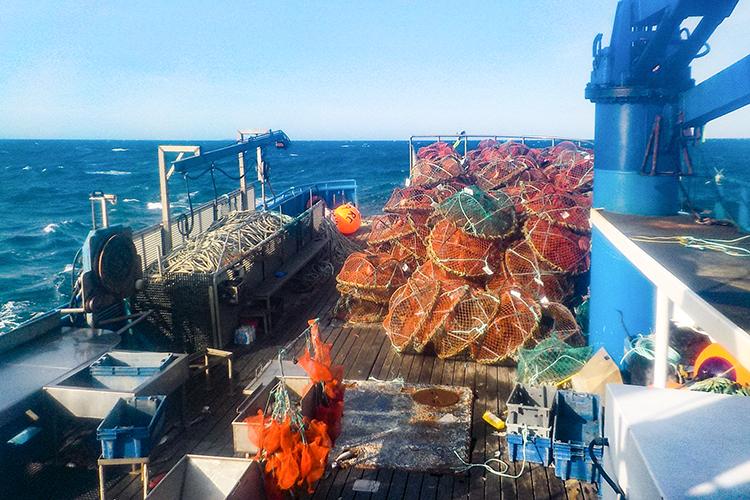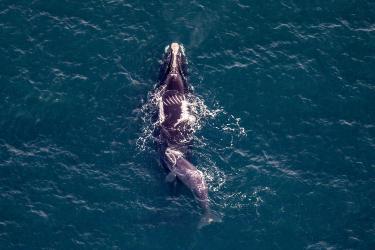A fisherman goes to sea to catch fish. I go to sea to catch data. Well, okay, I don’t really catch data, but I do gather vital information on fishing activities that’s important for fisheries management. I am what’s called a fisheries observer. I get to witness a unique side of fishing that most never see or even knew existed. That’s what I love about my job!
It’s more than taking a ride on a boat and watching what happens. Things have to be done a certain way so we can provide the best science available for ocean stewardship and help to ensure informed management decisions are based on sound science.
Last May, I sailed out of New Bedford, Massachusetts, on a commercial fishing vessel targeting Atlantic deep-sea red crab. When I arrived at the vessel, the crew was loading bait and provisions for the trip. The bait used for red crab fishing is Atlantic menhaden.
The journey to the fishing grounds took about 15 hours. We fished in the canyons along the continental shelf about 100 miles southeast of New York City. The fishing grounds for red crab run from Hague Line—the international boundary that divides U.S. and Canadian waters on Georges Bank—south to North Carolina. The canyons are deep—about 300 to 500 fathoms. That’s about the length of five to eight NFL football fields end to end.
The crew hauled, baited, and set three strings of pots each and every day for 8 days. Each string had 200 pots attached to it. This makes for very long days of fishing and data collecting, but the time goes fast. While on a trip like this, I take a subsample of catch from each string to collect information like crab weight and size. I also collect other information and data as needed, and note what the captain keeps.
For the most part, the weather during this trip was comfortable—not too hot, not too cold. On one of the days, the weather changed and we were hit with a heavy rain squall. These squalls cause the seas to rise and the winds to become very strong, making it hard to see. We all figured a way to work through it. Having good foul-weather gear is a real bonus. Near the end of the trip, a 6-foot wave hit the vessel broadside, splashing everyone on deck. We all had a good laugh at our unfortunate soaking.
One of the many things I enjoy about being an observer is the unpredictability of each trip. From the crews and vessels that I work with to the variety of unique sea life I get to witness, it’s never a dull moment. This is what has kept me going for 19 years! For example, during this trip, I saw many Risso’s dolphins just hanging out as we hauled gear. I also saw a rare sighting of skuas flying around the vessel. They’re a predatory seabird of the North Atlantic.
Since red crabs live deep in the ocean, occasionally a rare deep-sea fish or other marine creature comes up in a pot. On this trip, an Arctic threebearded rockling came onboard. This was a new species to me so I took pictures of it for our Species Verification Program.
As we headed home from this 9-day trip, I thought about all that I saw and did. I also took some time to think about what I would do with all my well-deserved time off. As always though, I’m looking forward to my next at-sea adventure!








